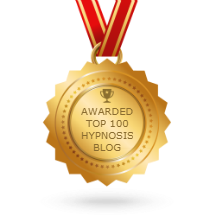by Hervé Boisdé
Salvador Dali 'The Persistence of Memory'
We're all a bit fascinated by dreams even if we don't actively analyze them like Freud did. I mean...where do they come from? Do they have a deeper significance? I think we've all wondered about that. While we can't really be sure of the purpose of dreams, what we can agree on is that some amazing ideas have been born from them.
Salvador Dali's most famous painting was inspired by a dream, and he called many of his paintings "hand painted dream photographs". He also had a painting named 'Dream Caused by the Flight of a Bee Around a Pomegranate One Minute Before Awakening' (1944).
This video about the Beatles' Yesterday explains that Paul McCartney came up with the song in a dream and was fearful that he had unknowingly plagiarized it from somewhere he couldn't remember.
John Lennon also claimed that one of his songs, "#9 Dream", also came to him in a dream.
Niels Bohr, known as the father of Quantum Mechanics, had been struggling with the correct structure of the atom when a dream helped him with the discovery. In his dream he saw the nucleus in the center with electrons spinning around it much like planets orbiting the sun. When he awoke he became certain that the image he saw in his dream was correct.
On a less scientific note, director James Cameron credits the idea for his blockbuster film Terminator on a fever dream he had when he got sick. The ambitious director was little known at the time having only directed Piranha II: The Spawning up until that point. But when he had the fever he dreamt of a robot, cut in half, pulling itself along using a kitchen knife and dragging a broken arm, as it chased after a fleeing girl. He said it was "a really horrific image" and when he woke up, despite his illness, he forced himself to make a sketch of the robot which became the inspiration for the movie.
So we can see that dreams can be a source of creativity and ideas. But how do you tap into that?
Some people claim that they don't remember their dreams. It's been proven that we all dream, even if we don't seem to remember them later on. Many people have been able to improve their dream recollection by keeping a dream journal close to the bed. Often-times when we awake after we've experienced a dream we are still in a semi-asleep state and then we fall back into sleep and the dream disappears. If you can train yourself to jot down the dream in a journal immediately after you wake up then you will be able to get better at recalling your dreams more easily, even if you don't write them down every time.
People have also been able to train themselves to have lucid dreams, where they are asleep but aware that they are dreaming, and thus able to control what is happening in the dream. This is a bit like being a director in your own mind movie and there are inspirational possibilities with that also.
Meditation and hypnosis tap into the alpha and theta brainwave cycles known for accessing the subconscious mind, which is the seat of imagination and emotion. Similarly, hypnagogia is an altered state that everyone experiences when we are between sleep and being awake. We can have dream-like visions and this is a very creative brain-state to be in. Many people have had moments of clarity, epiphanies, or the spark of idea...an "Aha!" moment where they have come up with the solution to a problem that that has been troubling them for a long time.
On a more spiritual level, some people believe that there are dreams that are memory fragments of a past lifetime, especially if they are extremely vivid and seem to be set in a distant time. This has led some adventurous souls to look into Past Life Regression hypnosis to explore the possibilities of past lives. Dr Brian Weiss, author of 'Many Lives, Many Masters' (who trained me in Past Life Regression Therapy), advises people to look down at their feet and notice if they are wearing antique footwear if they suspect they are having a past life dream or past life experience in trance.



